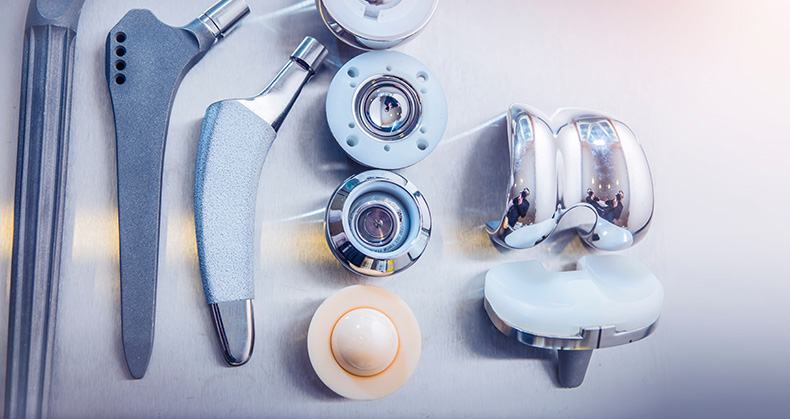
Last March, the U.S. Environmental Protection Agency established tougher standards to ensure that commercial sterilizers minimize ethylene oxide (EO) emissions by 90% and 21 tons per year. High-volume commercial sterilizers now have a little more than a year to comply with the new directives.
According to FDA, EO accounts for approximately 50% of the devices that require sterilization. Another 40% to 45% of medical devices are sterilized by gamma radiation, and the remaining 5% to 10% are sterilized by electron beam, X-ray and other methods.
Roy Morgan, President and CEO of Eagle Medical, acknowledges a continuous and perhaps mounting pressure within the industry to find alternatives to EO. However, the reality is more complex.
“Because of how devices are manufactured and the material constraints we face in the real world, EO will remain a vital sterilization method,” he said. “Its utility lies in achieving outcomes that other sterilization modalities simply cannot match. For now, however, EO retains a necessary place in the marketplace.”
That said, EO’s long-term viability is challenged by its established risks as a known carcinogen and mutagen, which pose serious concerns for sterilization professionals who work in EO facilities. This creates cost pressures, as employers increasingly struggle to find workers who are willing to accept these risks. Additionally, many neighborhoods and cities are likely to resist hosting EO facilities.
In the face of these geographic, financial and regulatory pressures, the orthopedic industry will need to adapt and evolve to navigate bottlenecks caused by the movement away from EO.
“The challenge lies in finding sustainable ways to address these concerns without compromising sterilization’s critical role in the supply chain,” Morgan said.
Explore More Than One Option
To address the bottlenecks created by EO facility closures and the push for alternative sterilization methods, Morgan said orthopedic companies should adopt a dual-validation pipeline, which involves maintaining two alternative, competing sterilization methods simultaneously during the product design and development process.
“One key aspect of this approach involves the design of the packaging,” Morgan said. “Many clients come to us with their designs, and we help them select materials and structures that are compatible with multiple sterilization modalities. This allows them to prototype and test different methods early in the development cycle and helps them bypass the bottleneck by providing sterilization flexibility. It empowers customers with more than one viable option as they move forward.”
Morgan said selecting the appropriate sterilization modality is best done early in the product development process, particularly when the primary challenges involve materials and bonding. “The first step is to review the materials database for the components in your device,” he added. “For each part or component set, identify the primary material you’d like to use and then list at least two viable alternatives.”
Don’t worry about costs at this stage — focus on feasibility and compatibility. List the materials in your devices and add at least two viable sterilization options for each. Then evaluate the materials against the sterilization modalities and ensure that the entire device can be sterilized uniformly by a single modality.
“Through this iteration, you’ll likely find that some materials fall off the list because they cannot withstand certain sterilization methods,” Morgan said. “Uniformity is key. Sterilizing parts of a device using different modalities is impractical and introduces unnecessary complexity to the process.”
This proactive approach streamlines product development, Morgan said, even in the ideation phase when you’re figuring out how pieces made of different materials fit together.
Expertise is needed to fully understand how different sterilization modalities impact not only the packaging, but also the product and its material database, according to Morgan. “While the process may seem straightforward, it’s far from simple,” he said.
That’s why it’s crucial to think through every aspect of packaging design at the front end of the product development process. “A well-designed package will facilitate smooth transitions between sterilization methods,” Morgan said. “If done correctly, switching from one sterilization method to another becomes more of a revalidation cost rather than a prohibitive one.”
Dana Wilcox, CEO of Mainstream Medical Devices, believes time constraints and stubbornness are barriers to transitioning away from EO.
“Many orthopedic companies are used to their established standards of practice and are often unwilling to seek out alternative sterilization methods,” she said. “When a product that is already on the market is provided sterile through the use of EO, device manufacturers shy away from transitioning to other modalities due to the costs and time associated with validating the new approaches.”
However, Wilcox noted, the timeline and costs needed to transition to a different sterilization method decrease considerably when orthopedic manufacturers partner with a packaging supplier with a sterility product family. Making the shift now before EO-reduction mandates take full effect is a smart business decision.
“Early adopters of alternative sterilization methods are experiencing higher profit margins because they have been sterilizing higher volumes of product for lesser costs than EO,” Wilcox said.
Understanding the Alternatives
Gamma sterilization is the leading alternative method to EO for orthopedic devices, Wilcox noted. She said that gamma is advantageous because of its high penetration power, its ability to sterilize dense materials and its compatibility with materials used to manufacture orthopedic devices. Gamma is also an excellent method for high-volume production due to its high penetration capabilities that sterilize materials and complex packaging very quickly, according to Wilcox.
Morgan touts the benefits of hydrogen peroxide sterilization as an easily deployable method that essentially eliminates residuals after sterilization cycles. It offers significant advantages when sterilizing battery-operated, software-driven electro-medical devices.
“The real advantage of hydrogen peroxide lies in its ability to break down into water and oxygen,” he said. “This breakdown is easily facilitated with a bit of heat and time, and the process typically takes less time than evaporating EO residuals. From a sterilization cycle perspective, this makes hydrogen peroxide a cost-effective and efficient option.”
Betty Howard, Senior Radiation Sterilization Manager at Steris, said X-ray sterilization is a hybrid of gamma radiation and electron beam methods that employs directional photon energy and provides a broad spectrum and wide distribution of penetration depths.
One significant advantage of X-ray is its reduced material impact due to shorter exposure times, according to Howard. This means X-ray offers faster dose delivery, reduced processing times and less material degradation risk.
“The increasing demand for sterilization services — driven by more complex products and higher volumes — has highlighted limitations in gamma capacity,” Howard said. “Scheduling constraints and the time required to process larger volumes of products have made diversification of sterilization methods essential.”
Given these challenges, X-ray is emerging as a viable alternative — or supplement — to gamma sterilization, Howard noted.
As the industry adapts to the evolving demands of device sterilization while limiting the use of EO, it’s crucial for orthopedic companies to incorporate alternative methods into their long-term strategies. The goal is to grow sterilization capacities without compromising product safety or efficacy, and there’s no better time to start than now.
DC
Dan Cook is a Senior Editor at ORTHOWORLD. He develops content focused on important industry trends, top thought leaders and innovative technologies.




